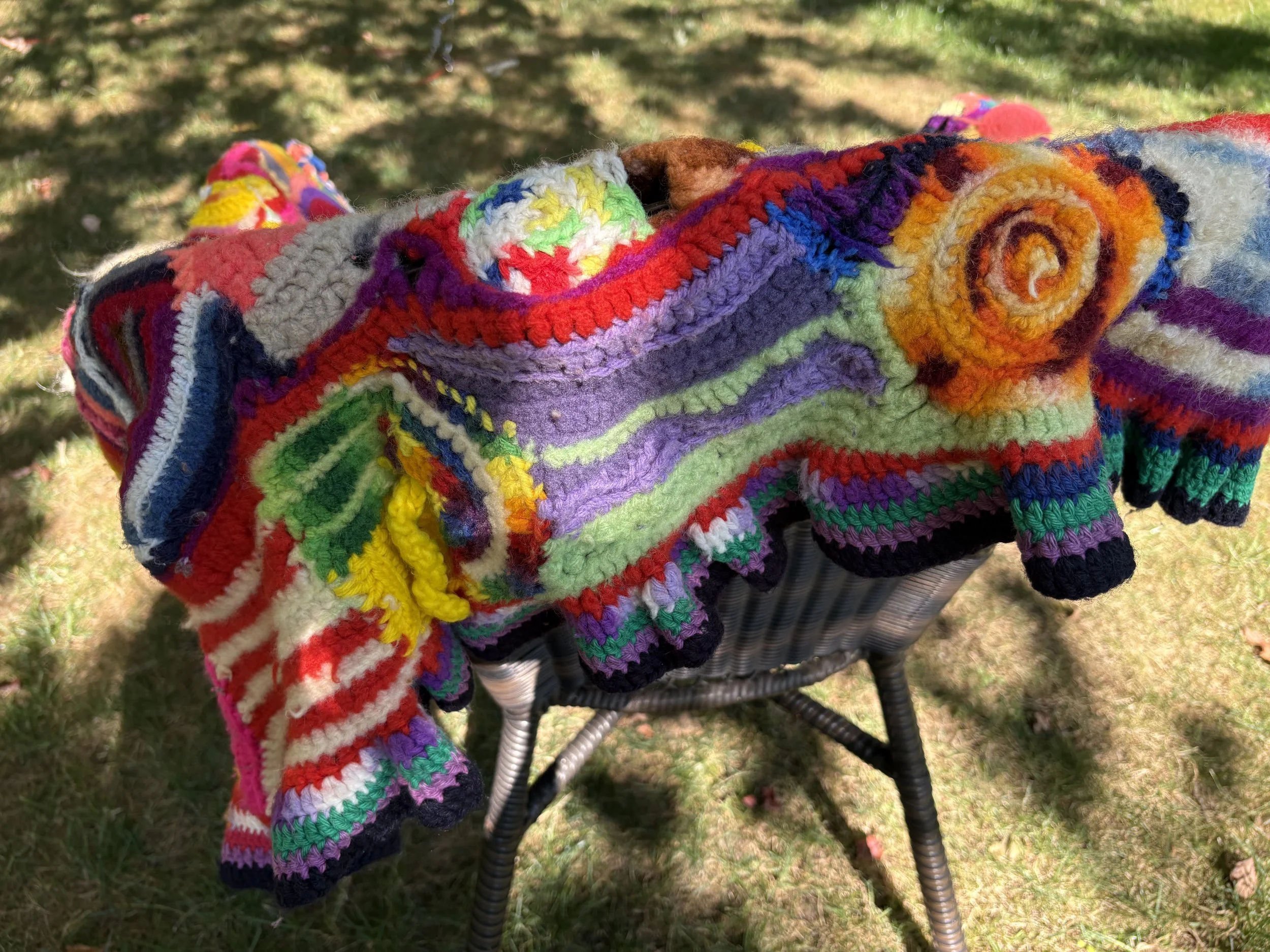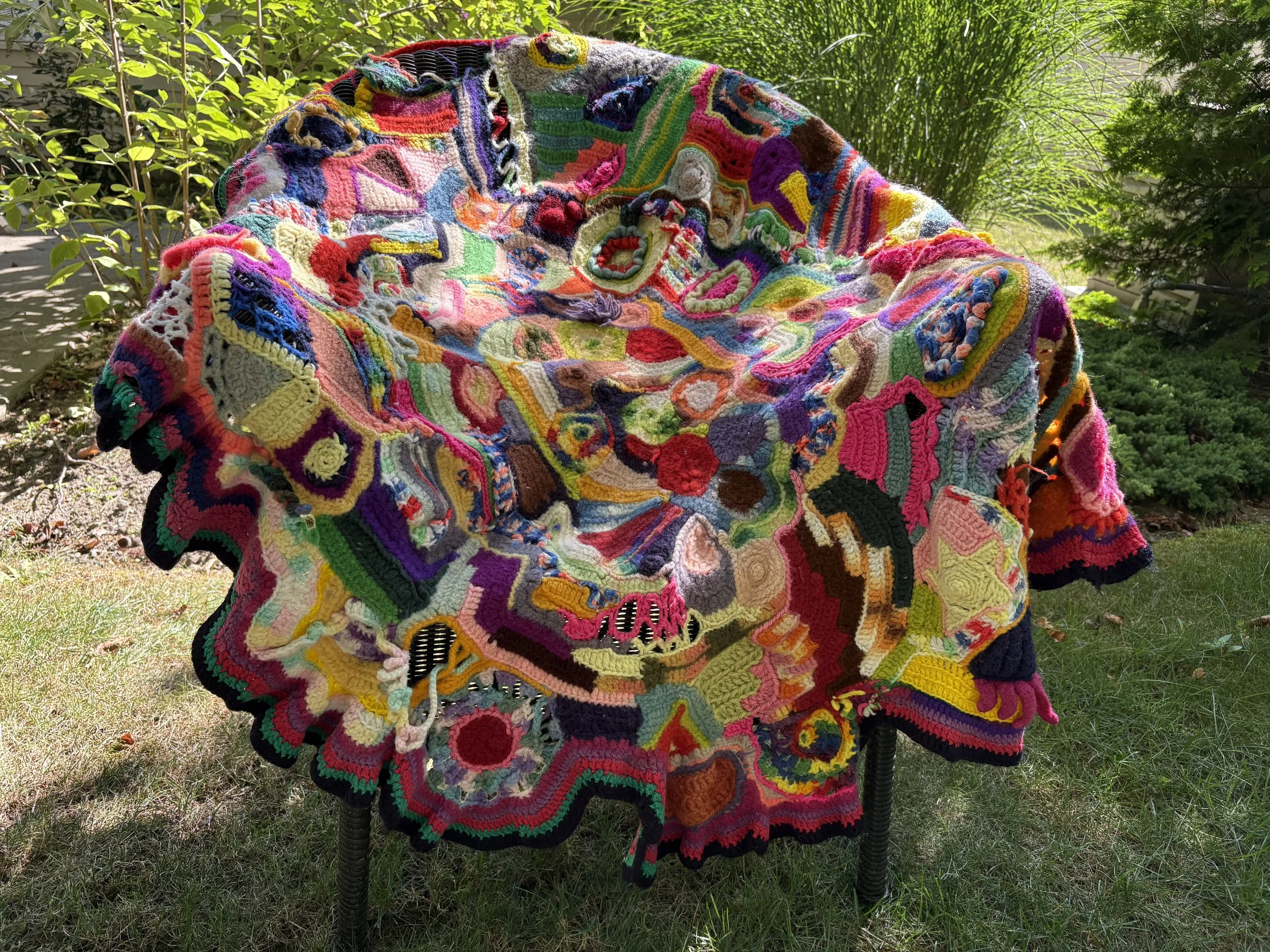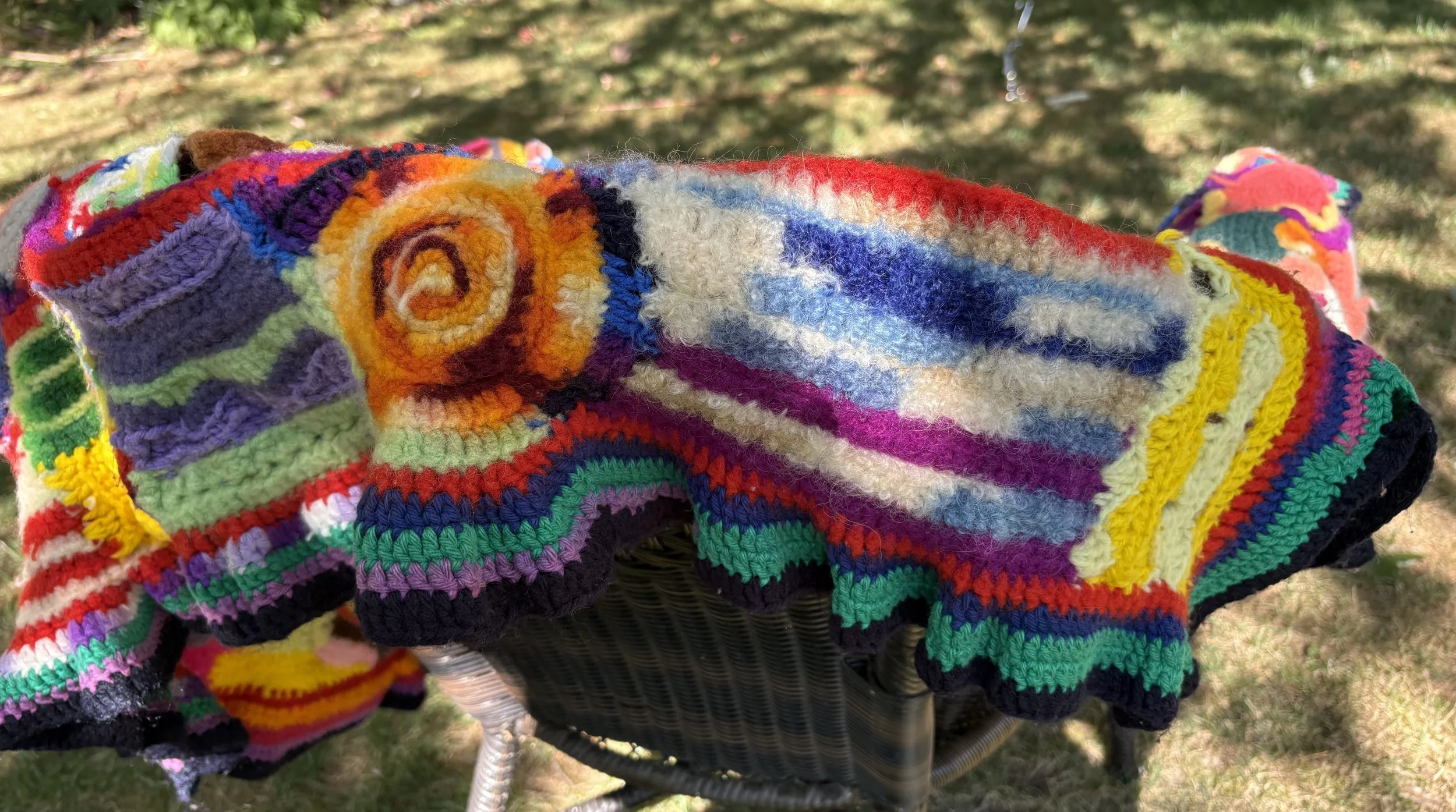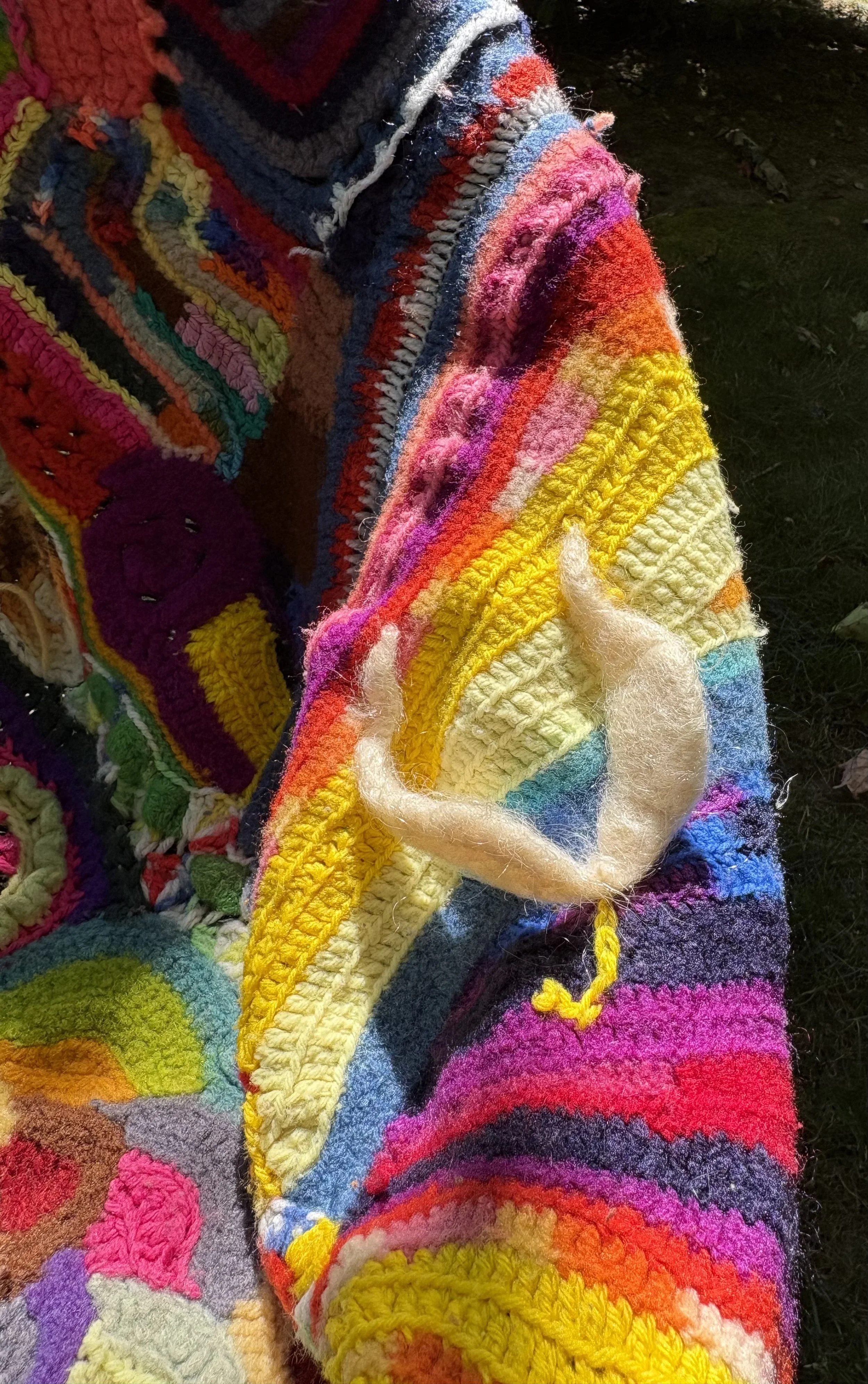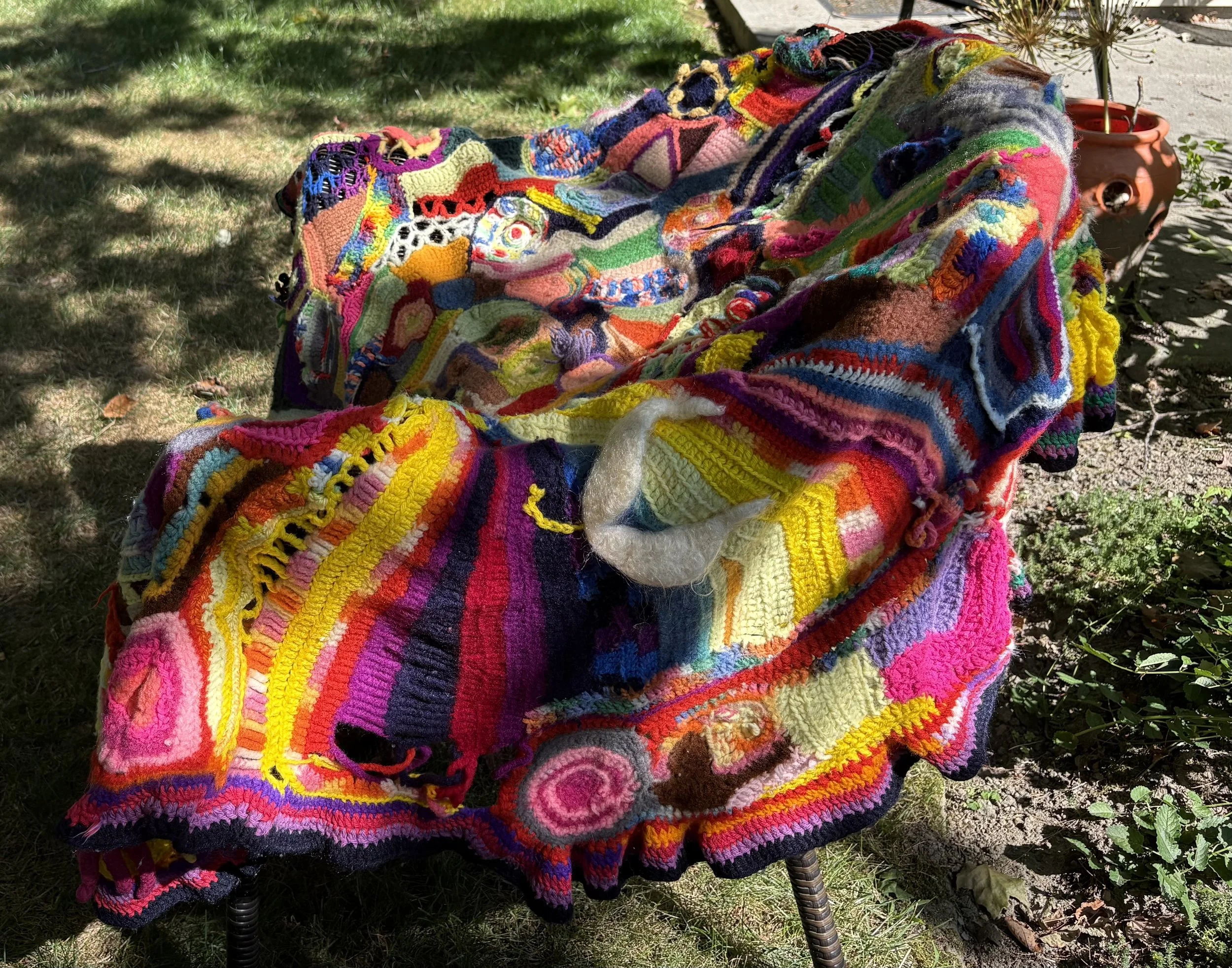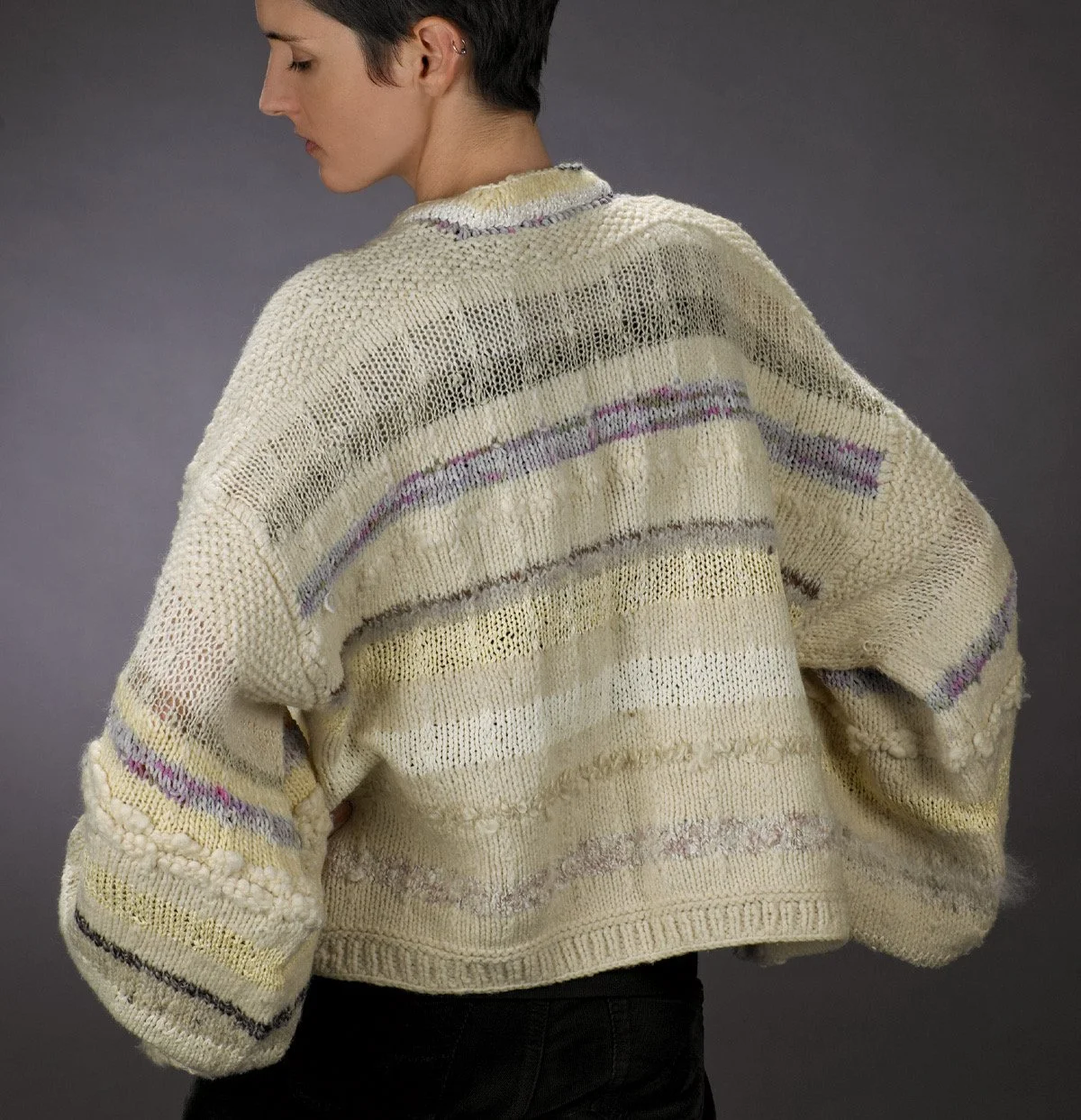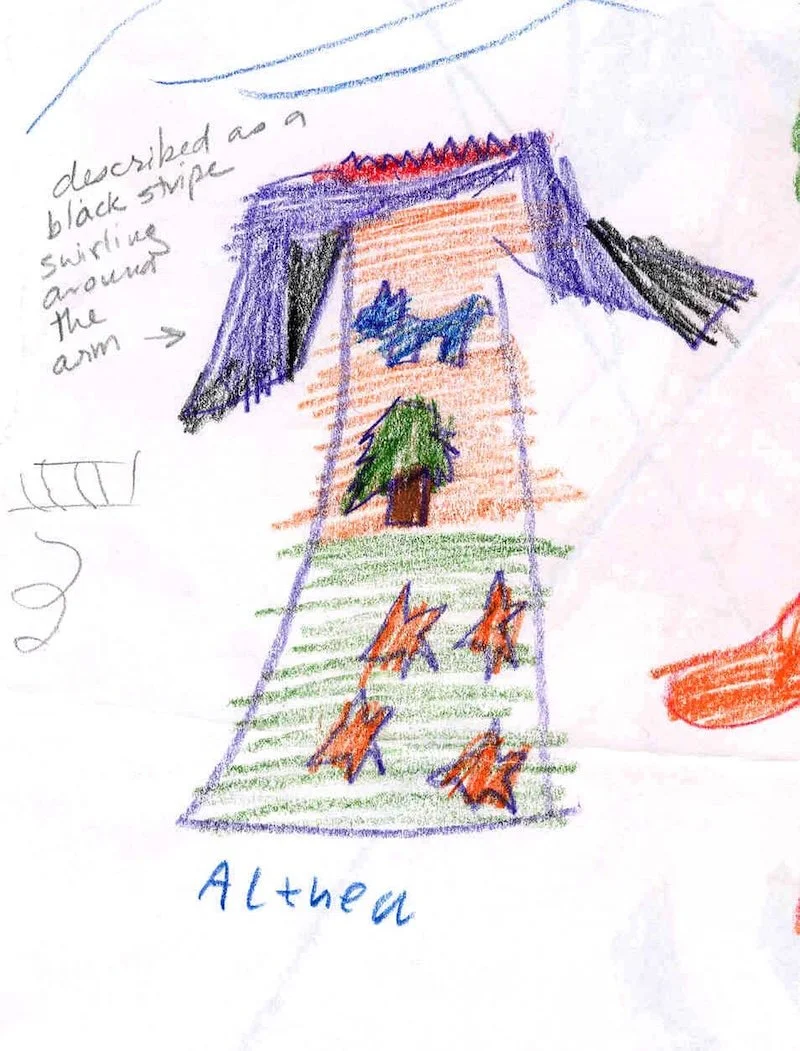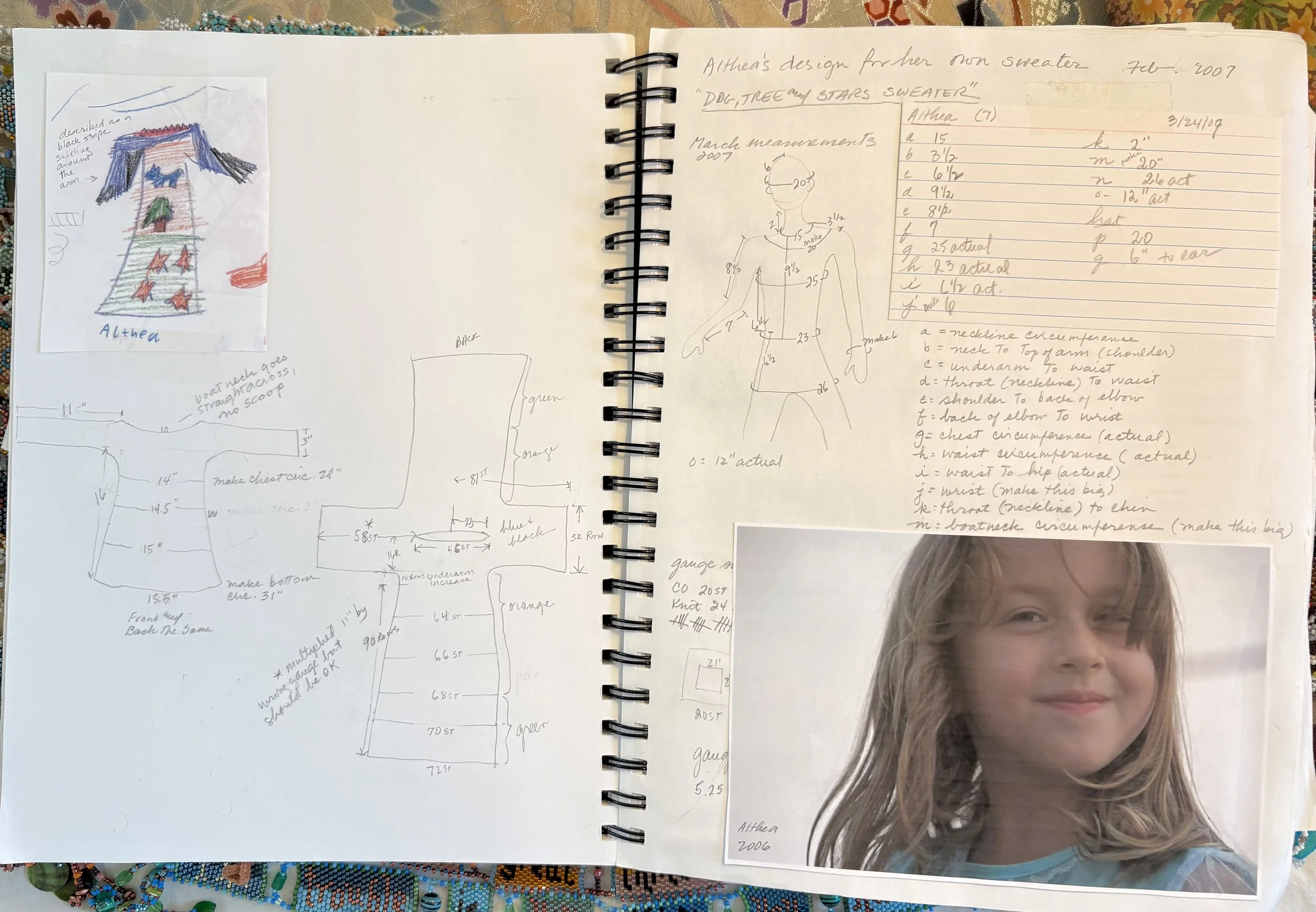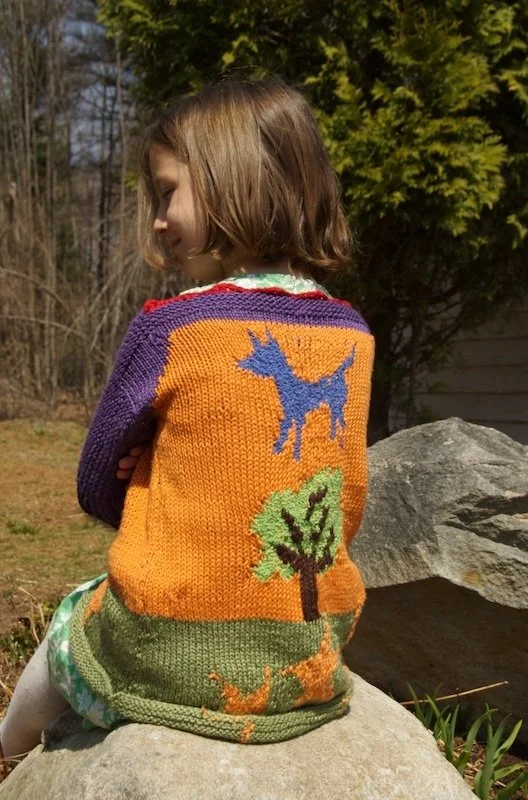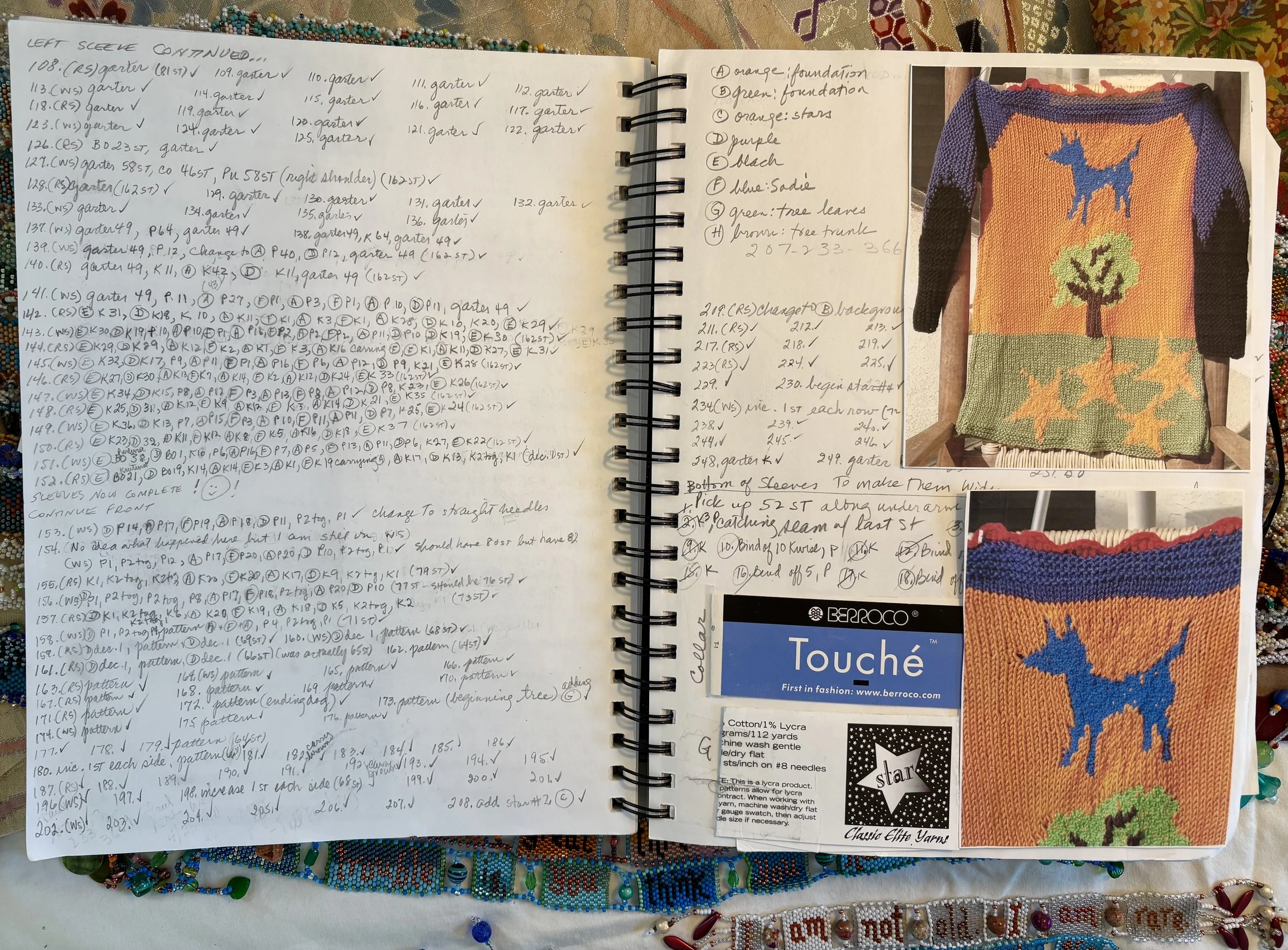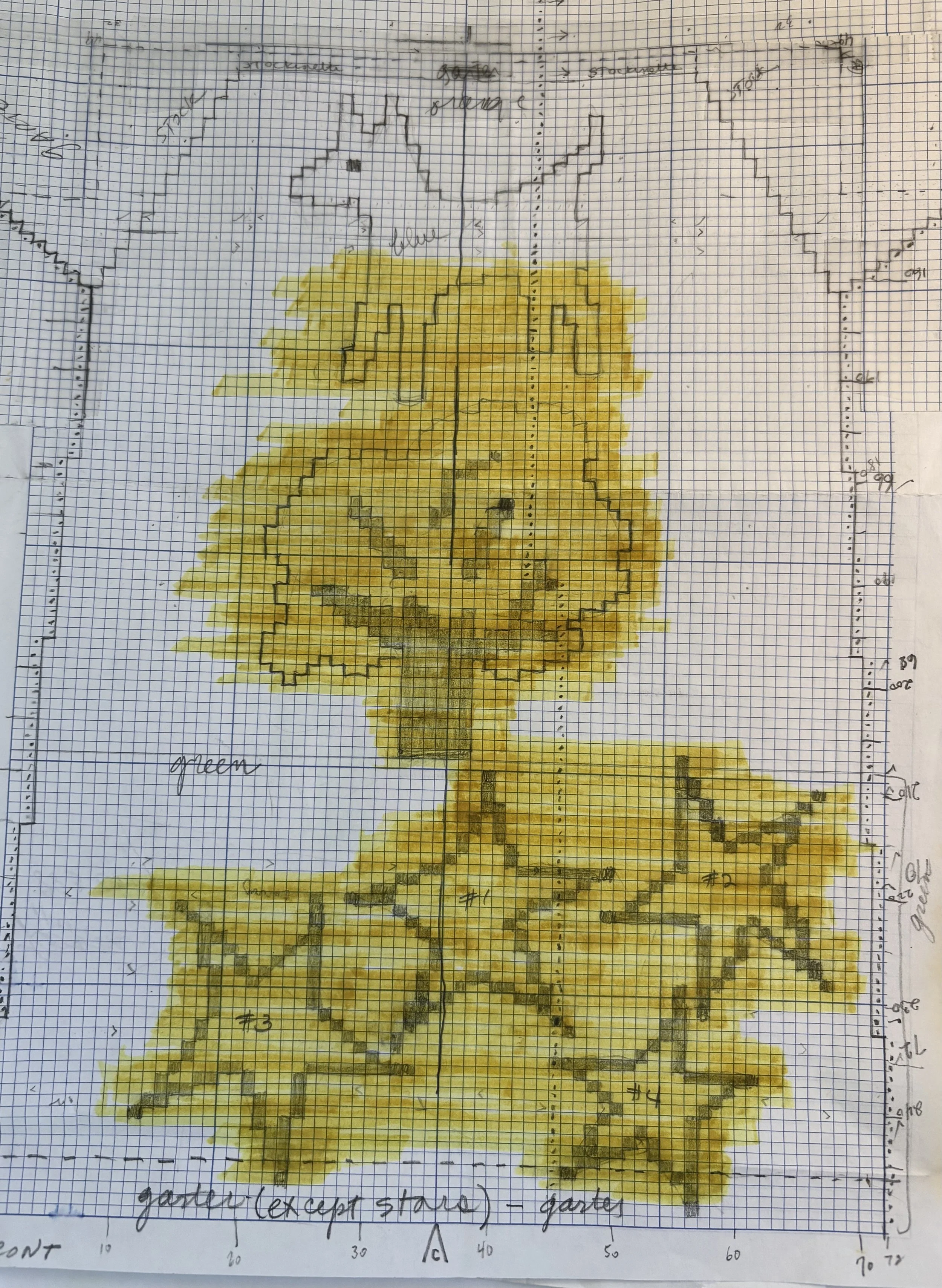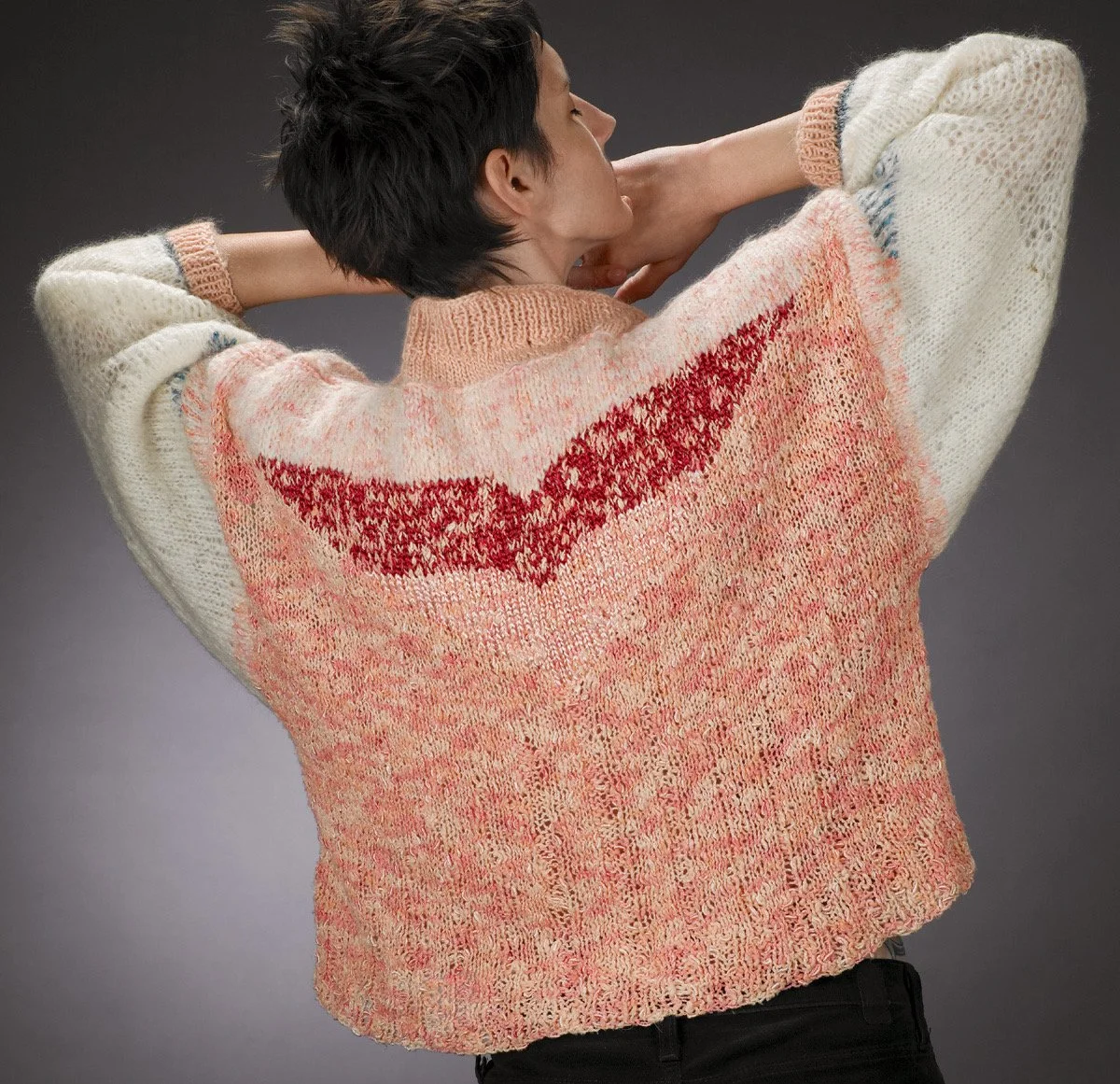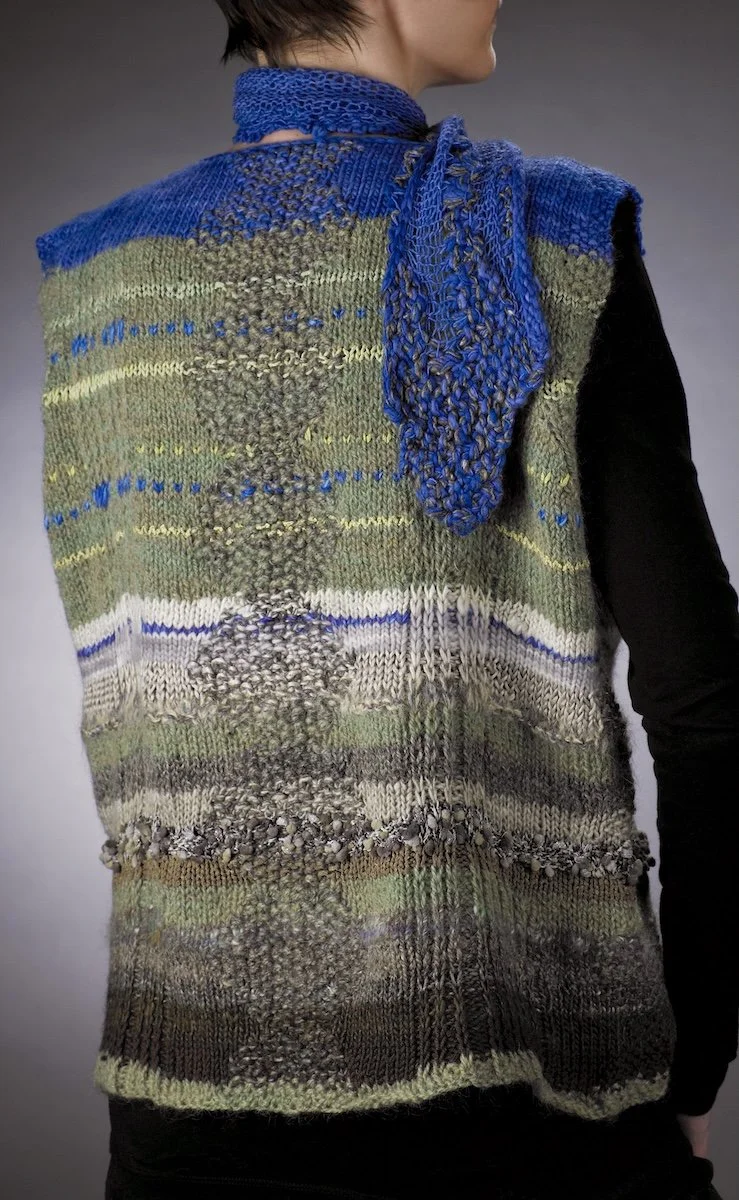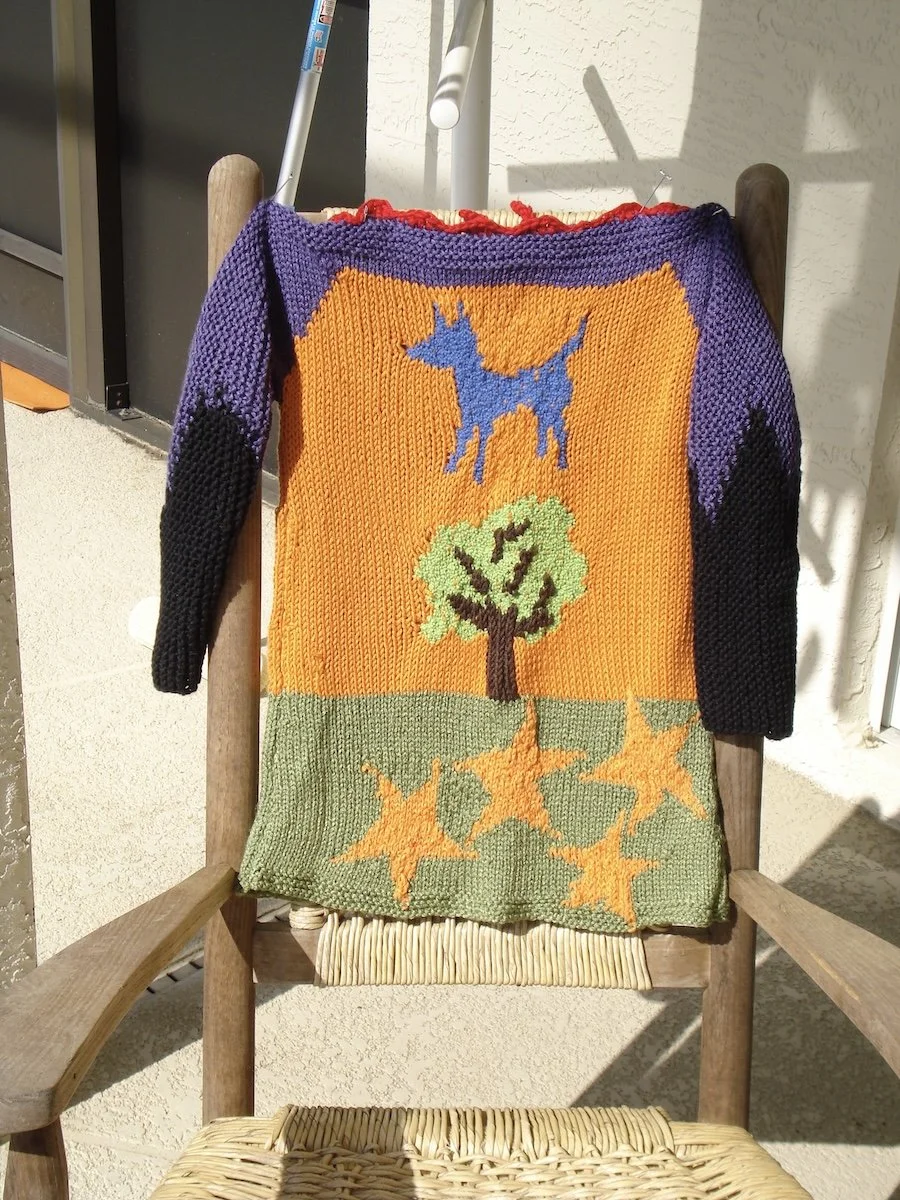NOTE: This web site is not designed specifically for mobile phones. Therefore pictures may appear in a different order than they would on a laptop, desktop, or tablet. And… IT’S STILL IN THE WORKS.
Knitwear Design
NAN’S “NO RULES KNITTING” EXPLAINED I refer to myself as an “Unrepentant Old Hippie” and, therefore, resistant to rules made by others.
A long time ago, a good friend taught me how to crochet. (I had always liked those multicolored Granny Square afghans.) So I immediately bought a bunch of inexpensive yarn in several colors, all about the same weight and fiber. After I completed my first Granny Square, my brain said, “No way! Boring!” So, I used that ONE lone square as the beginning of a scarf. That allowed me to pick up the stitches on one side of my granny square, continue to crochet in whatever direction or shape and color I wanted, happily changing patterns and colors “in midstream.“ I made stripes and flowers, circles and loops, and weird sculptural parts.
When I finished the scarf, I wore it a few times and then decided it should be the beginning of a whole afghan. My young daughter and her friends often picked which colors and shapes I might add next. There is even a small set of white wings carrying the letter, “J, in memory of a dear friend, Jonathan Longyear, who long ago died in a hangliding accident on a New Hampshire mountain.
This method of “designing” is actually very freeing and fun. Stitching errors or unexpected results simply add interest to the pattern. You can’t make a mistake. Call them glitches or think of them as “Design Adjustments.” You just keep crocheting until you’re done. .
Later, a very patient person taught me how to knit and purl. But after trying to understand the directions of a sweater pattern and finding it hopeless, I decided to just look at an actual sweater and figure out how it was made. I’ve been knitting without patterns ever since. Instead I just sketch, very simply, the main concept of the design, and then begin. I note every color and every step in detail in my sketchbook as I go. In this section of the website you’ll find some examples of these sketchbooks.
I also don’t worry about combining yarns that are not all the same weight and texture. I just add them in and knit for a while to see what they look like.Then I make adjustments as needed, sometimes changing the knitting needle size for that section. Or making a change to the overall design in order to include that particular yarn.
Along the way, I discovered that I hate sewing seams. So I design sweaters with the least possible amount of seam work. First, I make a swatch with the yarn that I refer to as the “foundation fiber." I use the swatch to estimate size measurements. Then, basically, I cast on and begin knitting. I start with the back bottom edge, continue to knit my way up the back (paying attention to how my design concept and yarn combinations are looking.) My designs always contain several different weights and types of yarn and fibers. When I get to the top of the back panel, I simply continue knitting - without stopping - over what will become the shoulders, continuing to knit until I reach the bottom of the front hem. (I have often had well-meaning friends describe my knitting method as “doing it wrong.” However, “doing it wrong”has taught me some exciting new stitches.)
Sometimes I knit sweaters in the round, which also eliminates lots of seam stitching. (Again, I’ve been told that this method is “wrong’” but it works for me.) There are still seams, but they are fewer and at least they are all “straight.”
I include lots of textures which, in some cases, help with the sweater’s structure. I love making big, sculptural, sleeves that end in snug wrists. I often knit each sleeve “in the round.” No seams, except attaching the sleeve to the body of the sweater. It is also easier to “sculpt” the sleeve shapes this way.
Of course, just like my needlework and beadwork, my designs always include many colors. Fortunately, I have a husband has never said, “Why do you need so many reds?”
Every piece of my work, in every medium, is completely my own design.
Most of the the sweaters shown here were professionally photographed by Randy Batista in Gainesville, Florida. (Randy also gave me my first solo exhibition in his gallery in Gainesville, but that’s another story.)
Nan
It began with this scarf. Then it just kept going.
Two views of the completed afghan and a “J” for Jonathan.
THE WHITE STRIPES In honor of Jack Black
A MAINE MEADOW AND STREAM
Behind our house tn Maine there was a beautiful meadow, backed by a pine forest planted by my Dad many years before. The whole property had been untouched for at least 30 years, except for the annual cutting of Christmas trees for our family and friends. Tom and I built a home there around 1995.
The blue scarf represents a lovely stream, complete with waterfall, which ran along one border. The colors and textures of the vest represent the high grasses, populated by a dozen wild turkeys, a fox, and some deer. The ancient stone walls found in several places throughout are represented by the appropriate stitches in grays.. These walls were all hand-built and treasured in Maine.
ALTHEA DESIGNS ALTHEA’S SWEATER
One day my granddaughter, Althea, asked me to make her a sweater. I replied, “Of course, but you have to design it.” Her drawing below shows her dog, Sadie, a big tree, and some happy stars. The bottom half of the sleeves are black. There is a red trim at the neckline. What she didn’t tell me was that the drawing showed the back, not the front.
Althea’s original drawing
From sketchbook, Althea’s Sweater (partial)
PEACHES
GRAYLING SWEATER
-- - - - - - - - - - - - - - - - - - - - - - - - - - - - - - - - - - - - - - - - - - - - - - - - - - - - - - - - - - - - - - - -
ANEMONE SWEATER
Made for my mother, Anne. The collar and wrists are decorated with crystals.
SKATER SWEATER
FALKLAND ISLANDS SWEATER
This sweater commemorates the work my father, Ladd Heldenbrand, did when he went with a team to the Falkland Islands to save a portion of The Snow Squall, the last clipper ship built in America. It happened to have been built about 3 miles from where my parents lived, in South Portland, Maine. The Snow Squall Project was being performed by the Peabody Museum at Harvard. As soon as the Falkland Islands War ended, the work was underway. This book, by Nick Dean, describes the entire project.
When Dad came home, (in photo, he is second from the right holding a big saw), he handed me a bag of beautiful blue yarn. He explained that it was wool from Falkland sheep (the ones that hadn’t been blown up by land mines during the war with Argentina.) He said he thought I could knit Mum a sweater with it. This is the sweater I designed. The streaks on the front and back represent the sea and the sky. (Design note: the left sleeve as it nears the wrist has multiple colors instead of the solid blue of the other sleeve. That’s because I ran out of the original blue yarn. Oops. I refer to this kind of occurrence as “A Design Adjustment.”)
The bow of the Snow Squall is now at the Maine Maritime Museum in Bath.
MARINE GREEN SWEATER
AMETHYST VEST
Made in an effort to learn Fair Aisle style knitting. Yes… I know the front edges are wonky, but I learned a lot about how to make them the next time . Also, it was on purpose that the designs don’t “line up.” That way I could try out more motifs.
MORE SWEATERS WILL BE POSTED SOON…

